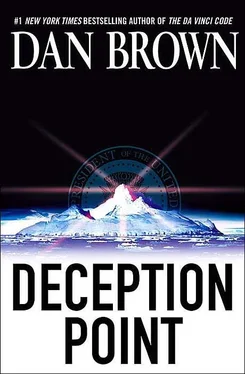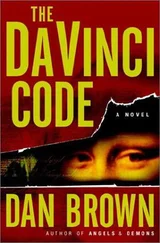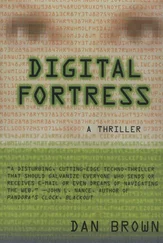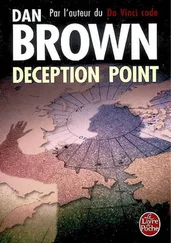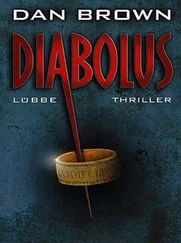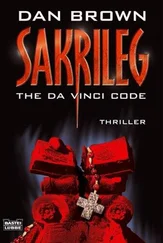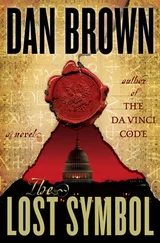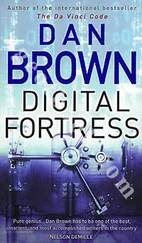Inside the hydrolab, the fax machine beeped contentedly.
CARRIER FOUND... FAX SENT
Kill or be killed. Rachel had discovered a part of herself she never knew existed. Survival mode—a savage fortitude fueled by fear.
“What was in that outbound fax?” the voice on the CrypTalk demanded.
Rachel was relieved to hear confirmation that the fax had gone out as planned. “Leave the area,” she demanded, speaking into the CrypTalk and glaring up at the hovering chopper. “It’s over. Your secret is out.” Rachel informed their attackers of all the information she had just sent. A half dozen pages of images and text. Incontrovertible evidence that the meteorite was a fake. “Harming us will only make your situation worse.”
There was a heavy pause. “Who did you send the fax to?”
Rachel had no intention of answering that question. She and Tolland needed to buy as much time as possible. They had positioned themselves near the opening in the deck, on a direct line with the Triton, making it impossible for the chopper to shoot without hitting the soldier dangling in the sub’s claws.
“William Pickering,” the voice guessed, sounding oddly hopeful. “You faxed Pickering.”
Wrong, Rachel thought. Pickering would have been her first choice, but she had been forced to choose someone else for fear her attackers had already eliminated Pickering—a move whose boldness would be a chilling testimony to her enemy’s resolve. In a moment of desperate decision, Rachel had faxed the data to the only other fax number she knew by heart.
Her father’s office.
Senator Sexton’s office fax number had been painfully engraved into Rachel’s memory after her mother’s death when her father chose to work out many of the particulars of the estate without having to deal with Rachel in person. Rachel never imagined she would turn to her father in a time of need, but tonight the man possessed two critical qualities—all the correct political motivations to release the meteorite data without hesitation, and enough clout to call the White House and blackmail them into calling off this kill squad.
Although her father was most certainly not in the office at this hour, Rachel knew he kept his office locked like a vault. Rachel had, in effect, faxed the data into a time-lock safe. Even if the attackers knew where she had sent it, chances were slim they could get through the tight federal security at the Philip A. Hart Senate Office Building and break into a senator’s office without anyone noticing.
“Wherever you sent the fax,” the voice from above said. “You’ve put that person in danger.”
Rachel knew she had to speak from a position of power regardless of the fear she was feeling. She motioned to the soldier trapped in the Triton’s claws. His legs dangled over the abyss, dripping blood thirty feet to the ocean. “The only person in danger here is your agent,” she said into the CrypTalk. “It’s over. Back off. The data is gone. You’ve lost. Leave the area, or this man dies.”
The voice on the CrypTalk fired back, “Ms. Sexton, you do not understand the importance—”
“Understand?” Rachel exploded. “I understand that you killed innocent people! I understand that you lied about the meteorite! And I understand that you won’t get away with this! Even if you kill us all, it’s over!”
There was a long pause. Finally the voice said, “I’m coming down.”
Rachel felt her muscles tighten. Coming down?
“I am unarmed,” the voice said. “Do not do anything rash. You and I need to talk face-to-face.”
Before Rachel could react, the chopper dropped onto the Goya ’s deck. The passenger door on the fuselage opened and a figure stepped out. He was a plain-looking man in a black coat and tie. For an instant, Rachel’s thoughts went totally blank.
She was staring at William Pickering.
* * *
William Pickering stood on the deck of the Goya and gazed with regret at Rachel Sexton. He had never imagined today would come to this. As he moved toward her, he could see the dangerous combination of emotions in his employee’s eyes.
Shock, betrayal, confusion, rage.
All understandable, he thought. There is so much she does not understand.
For a moment, Pickering flashed on his daughter, Diana, wondering what emotions she had felt before she died. Both Diana and Rachel were casualties of the same war, a war Pickering had vowed to fight forever. Sometimes the casualties could be so cruel.
“Rachel,” Pickering said. “We can still work this out. There’s a lot I need to explain.”
Rachel Sexton looked aghast, nauseated almost. Tolland had the machine gun now and was aiming at Pickering’s chest. He too looked bewildered.
“Stay back!” Tolland yelled.
Pickering stopped five yards away, focusing on Rachel. “Your father is taking bribes, Rachel. Payoffs from private space companies. He plans to dismantle NASA and open space to the private sector. He had to be stopped, as a matter of national security.”
Rachel’s expression was blank.
Pickering sighed. “NASA, for all its flaws, must remain a government entity.” Certainly she can understand the dangers. Privatization would send NASA’s best minds and ideas flooding into the private sector. The brain trust would dissolve. The military would lose access. Private space companies looking to raise capital would start selling NASA patents and ideas to the highest bidders worldwide!
Rachel’s voice was tremulous. “You faked the meteorite and killed innocent people... in the name of national security?”
“It was never supposed to happen like this,” Pickering said. “The plan was to save an important government agency. Killing was not part of it.”
The meteorite deception, Pickering knew, like most intelligence proposals, had been the product of fear. Three years ago, in an effort to extend the NRO hydrophones into deeper water where they could not be touched by enemy saboteurs, Pickering spearheaded a program that utilized a newly developed NASA building material to secretly design an astonishingly durable submarine capable of carrying humans to the deepest regions of the ocean—including the bottom of the Mariana Trench.
Forged from a revolutionary ceramic, this two-man submarine was designed from blueprints hacked from the computer of a California engineer named Graham Hawkes, a genius sub designer whose life dream was to build an ultra-deepwater submersible he called Deep Flight II. Hawkes was having trouble finding funding to build a prototype. Pickering, on the other hand, had an unlimited budget.
Using the classified ceramic submersible, Pickering sent a covert team underwater to affix new hydrophones to the walls of the Mariana Trench, deeper than any enemy could possibly look. In the process of drilling, however, they uncovered geologic structures unlike any that scientists had ever seen. The discoveries included chondrules and fossils of several unknown species. Of course, because the NRO’s ability to dive this deep was classified, none of the information could ever be shared.
It was not until recently, driven yet again by fear, that Pickering and his quiet team of NRO science advisers had decided to put their knowledge of the Mariana’s unique geology to work to help save NASA. Turning a Mariana rock into a meteorite had proven to be a deceptively simple task. Using an ECE slush-hydrogen engine, the NRO team charred the rock with a convincing fusion crust. Then, using a small payload sub, they had descended beneath the Milne Ice Shelf and inserted the charred rock up into the ice from beneath. Once the insertion shaft refroze, the rock looked like it had been there for over three hundred years.
Читать дальше
